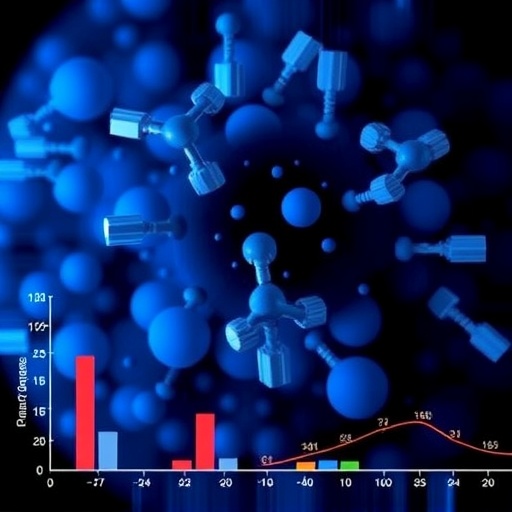CHAMPAIGN, Ill. — Greenhouse gas emissions significantly increase in countries in the Global South within a few years after initially borrowing from the International Monetary Fund using structural loans, but not when more flexible lending conditions are involved.

Credit: Photo by Fred Zwicky
CHAMPAIGN, Ill. — Greenhouse gas emissions significantly increase in countries in the Global South within a few years after initially borrowing from the International Monetary Fund using structural loans, but not when more flexible lending conditions are involved.
However, with countries’ second or subsequent IMF loans, their emissions spike almost immediately, regardless of the lending conditions involved, a recent study suggests.
Structural loans, one of IMF’s two primary lending instruments, specify the precise changes borrowers are required to make to obtain the funds. By contrast, quantitative loans require that borrowers achieve quantifiable benchmarks – such as reducing their deficit by 5%, for example – but give them autonomy in deciding how they accomplish it, said study author Matthew Soener, a professor of sociology at the University of Illinois Urbana-Champaign.
Structural conditions impose coercive market constraints, reforms that pressure borrowers to increase their exports, indirectly raising countries’ greenhouse gas emissions through greater agricultural or manufacturing activities, Soener said.
“As a way to maintain growth and repay that loan, countries might decide, ‘Well, we can export more bananas, forest products or other agricultural products’ – or whatever specialty they might have,” he said. “In doing that, the country might be solving one problem, but they are causing another by increasing their greenhouse gas emissions.”
Soener examined potential links between IMF lending conditions and emissions, as well as how these countries generated economic growth, for 130 Global South nations from 1980-2018. He reported the findings in the journal Socio-Economic Review.
The sample included 32 countries that had never obtained IMF loans, but Soener was uncertain why. Perhaps they were prosperous enough not to need an infusion of capital or there were other elements at work that were not evident, he said.
However, Soener purposely excluded from the sample members of the Organization of Petroleum Exporting Countries because these nations rely primarily on petroleum-based wealth that gives them more favorable investment dynamics. Compared with their peers, OPEC members are better positioned to shoulder the pressures of loan debt and avoid balance-of-payment problems – disparities in incoming funds and those flowing out to global partners – associated with repayment, Soener said.
Beginning in the 1980s, the IMF began insisting that structural conditions be attached to many of its loans, conditions that often involve privatization of borrowers’ natural resources or liberalization of their trade policies and foreign investment, according to the study.
There are three primary ways that these coercive lending conditions could cause greenhouse gas emissions to rise. The first is by devaluing domestic currency, which makes exported goods more competitive compared with similar commodities, Soener said.
The second is trade openness that results in foreign direct investment and capital inflows to lower- and middle-income countries, thereby increasing their production and exports. The third is pressures associated with austerity policies, such as cutting domestic social programs, because these can depress demand and make it difficult for borrowers to repay their debt.
Borrowers under pressure may resort to extracting natural resources to compensate, Soener said.
In Soener’s initial model, the data suggested that the type of lending conditions imposed on borrowers mattered. On average, quantitative conditions, which offered countries more flexibility in how they generated growth and enacted fiscal policies, resulted in lower emissions, while more restrictive structural terms resulted in emissions’ increases.
Soener then created a second set of models that provided a “before” and “after” picture of these effects, and compared changes in countries’ various greenhouse gases and whether these changes varied when it was a country’s first or subsequent IMF loan.
“For countries entering an IMF program for the second or subsequent time, emissions increased much faster – almost immediately, which suggests that repeated exposure to either type of loan accelerates this effect,” Soener said.
While increased emissions occurred across all market sectors, agriculture had a greater and more immediate impact. Increases in greenhouses gases associated with industry took somewhat longer – about eight or nine years after beginning an IMF program, an interval that made sense given that it takes time to build manufacturing infrastructure, he said.
The data also confirmed Soener’s hypothesis that greater market competition and the austerity policies often associated with IMF loans prompted borrowers to engage in “extractivism” – exploiting their resources such as timber and agricultural commodities to support economic growth through exports and repay their international lenders, according to the study.
Soener said his findings raise important questions about “what would happen if the IMF did not impose structural conditions on borrowers. My results suggest emissions would be relatively lower.
“If you have institutions like the IMF that impose rules over these countries that constrain them in some ways, then maybe we should be paying attention to those things as well,” Soener said. “That might be something we can rethink so these nations are allowed to develop, but not in ways that are based on highly extractive forms of economic relations.”
Journal
Socio-Economic Review
DOI
10.1093/ser/mwae006
Method of Research
Data/statistical analysis
Subject of Research
Not applicable
Article Title
Are IMF programs raising greenhouse gas emissions in the Global South
Article Publication Date
27-Feb-2024
COI Statement
No conflicts reported.




